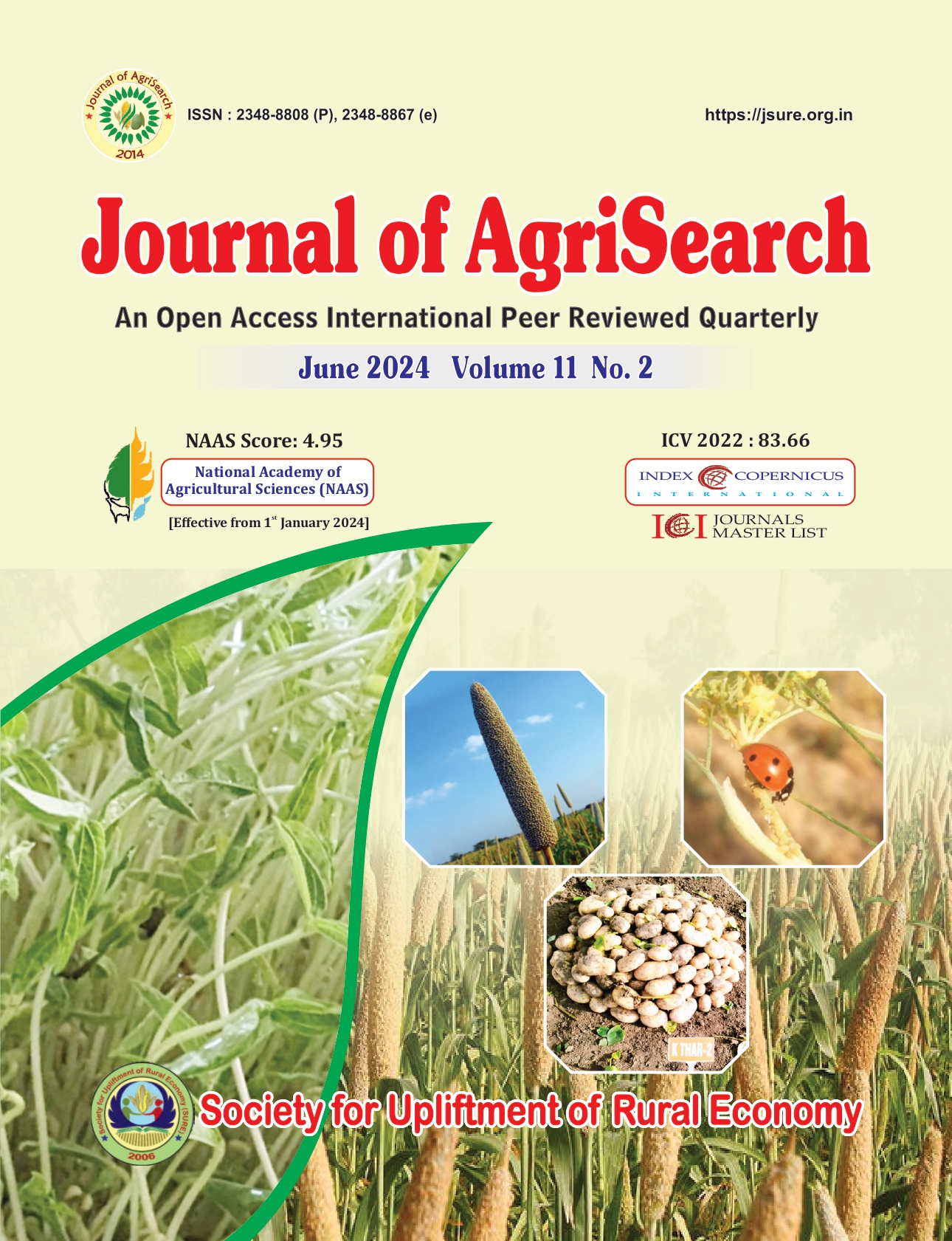Biostimulants and its influence on soil properties and crop production
Biostimulants for sustainable crop production
Keywords:
Organic Substances, , Biostimulants, Soil Quality, Crop ProductionAbstract
Environmental pollution is one of the most pressing global issues and it requires priority attention. There is increasing demands to increase the productivity of crops grown in unfavorable soil conditions. Biostimulants are substances widely used in agriculture to raise crop production and resistance to various types of stress and advantages of agricultural practices andit is more environment eco-friendly products. These are new concept has also accepted their ability to work against the injurious effects of pollutants on plants. Biostimulants consist of many different compounds with positive effects on plants, excluding pesticides and chemical fertilizers and regarding various substances of organic compounds. They are derived from amino acid hydrolysate, plant extracts biostimulants, humic substances, protein ands eaweed extracted are used. The application of biostimulants stimulated microbial activity influences soil biological properties and their microbial communities in field conditions. It also stimulated soil physical properties i.e. soil structure, soil porosity, structural coefficient with increased soil moisture content and decrease bulk density, along with, increase total carbon, nitrogen and the effects of physicochemical properties. These mechanisms of action of biostimulants help to maximize agricultural yields under stress conditions which provoked by climate change. Further, there is need tolong-termstudies to evaluate the effects of biostimulants on crop yield and soil resilience.
References
Abbas SM. 2013. The influence of biostimulants on the growth and on the biochemical composition of Vicia faba CV. Giza 3 beans. Romanian Biotechnological Letters 18(2): 8061-8068.
Cerdán M, Sánchez-Sánchez A, Jordá JD, Juárez Mand Sánchez-Andreu J. 2013. Effect of commercial amino acids on iron nutrition of tomato plants grown under lime-induced iron deficiency. Journal of Plant Nutrition and Soil Science 176:859-866.
García-Martínez AM, Tejada M, Díaz AI, Rodríguez-Morgado B, Bautista J and Parrado J. 2010.Enzymatic vegetable organic extracts as soil biochemical biostimulants and atrazine extenders. Journal of Plant Nutrition and Soil Science 58(17):9697-9704.
García-García AL, García-Machado FJ, Borges AA, Morales-Sierra S, BotoA and Jiménez-Arias D. 2020. Pure Organic Active Compounds Against Abiotic Stress: A Biostimulant Overview. Frontiers in Plant Science 11:575829.
Ghasemi S, Khoshgoftarmanesh AH, Afyuni M and Hadadzadeh H. 2013. The effectiveness of foliar applications of synthesized zinc-amino acid chelates in comparison with zinc sulfate to increase yield and grain nutritional quality of wheat. European Journal of Agronomy 45:68-74.
Karthikeyan K and Shanmugam M. 2016. Development of a protocol for the application of commercial bio-stimulant manufactured from kappaphycusalvarezii in selected vegetable crops. Journal of Experimental Biology and Agricultural Sciences 4(1):92-102.
Kumar V, Raha P and Ram S. 2018. Effect of irrigation schedule and amino acids biostimulants on soil enzyme activity in potato (Solanum tuberosum L.) crop. International Journal of Current Microbiology and Applied Sciences 7(4):2319-7706.
Kumar V. Singh SP and Raha P. 2018. Organic sources use of amino acids based biostimulants and irrigation schedule on yield: water use efficiency relationship on potato tuber. Journal of Pharmacognosy and Phytochemistry 7(1):1255-1259.
Liu X-Q and Kyu-Seung Lee K-S. 2012. Effect of Mixed Amino Acids on Crop Growth, Agricultural Science, Dr. Godwin Aflakpui (Ed.), ISBN: 978-953-51-0567-1.
Maini P.2000. The experience of the first biostimulant, based on amino acids and peptides: a short retrospective review on the laboratory researches and the practical results. FertilitasAgrorum 1:29-43.
Papnai N, Chaurasiya DK and Sahni S. 2022.Biostimulants: Concept, Types and Way to Enhance Soil Health. International Journal of Plant & Soil Science 34(20):24-40.
Petrozza A, Santaniello A, Summerer S, Gianluca D, Tommaso GI, Tommaso DD, Paparelli E, Piaggesi A, Perata P and Cellini F. 2014. Physiological responses to Megafol® treatments in tomato plants under drought stress: A phenomic and molecular approach. Scientia Horticulturae, 174:185-192.
Rajput RS, Ram RM, Vaishnav A and Singh HB. 2019. Microbe-based novel biostimulants for sustainable crop production. Microbial Diversity in Ecosystem Sustainability and Biotechnological Applications 109-144.
Shalaby TA and El-Ramady H. 2014. Effect of foliar application of biostimulants on growth, yield, components, and storability of garlic (Allium sativum L.). Australian Journal of crop science 8 (2):271-275.
Wadduwage J, Liu H, Egidi E, Singh, BK and Macdonald CA. 2023. Effects of biostimulant application on soil biological and physicochemical properties: A field study.Journal of Sustainable Agriculture and Environment 2:285-300.
Downloads
Published
Issue
Section
License
Copyright (c) 2024 Vimal Kumar

This work is licensed under a Creative Commons Attribution-NonCommercial-NoDerivatives 4.0 International License.
Publisher and Authors

